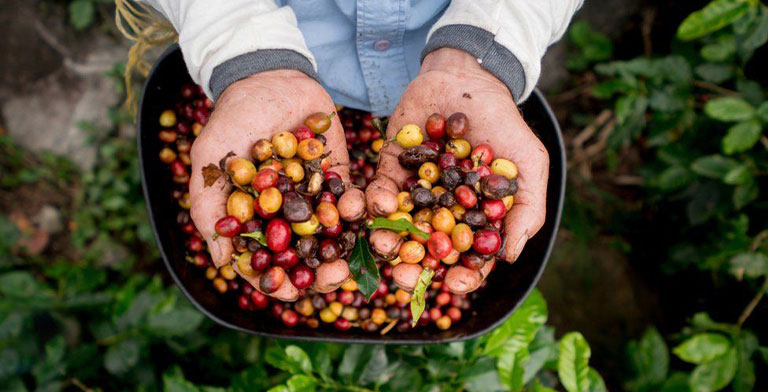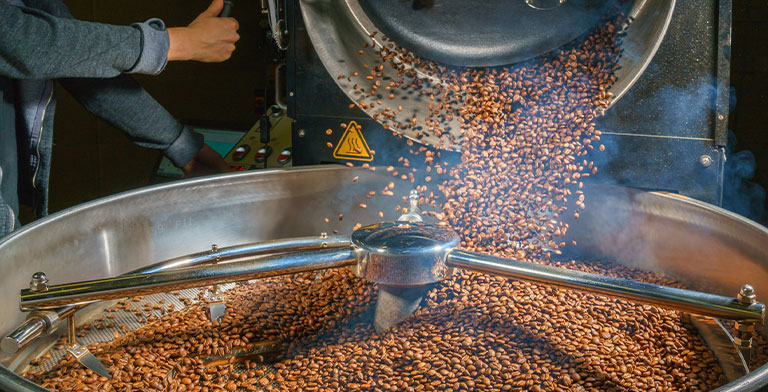
What is coffee, and where does it come from?
“Coffee - the favourite drink of the civilised world”
- Thomas Jefferson
Coffee is easily one of the most popular beverages across the known world. This beverage is brewed from the roasted and ground seeds of a species of a tropical evergreen coffee plant with origins in Africa and enjoys a status as one of the world’s most profitable international commodities. While coffee is widely used as a base for an endless range of beverages today, its popularity is largely a result of the invigorating properties that arise from the alkaloid known as caffeine.
The Origins of Coffee
The earliest known occurrence of coffee can be traced back to centuries to the Ethiopian plateau, where a goat herder called Kaldi was venturing through ancient forests and by chance encountered the magical effects of coffee. Upon discovering that his goats became increasingly active and avoided sleep the entire night after consuming a mysterious berry, he shared this exciting news with the abbot of the local monastery. Intrigued by this, the abbot created a beverage using these berries and found to his surprise that once he drank it, he could remain wide awake during long periods of meditation.
The news of this fascinating berry was circulated among the other monks and soon extended far beyond the walls of the monastery, reaching the Arabian peninsula, and thus began a journey that spanned an entire globe.
A Social Convention
The cultivation of coffee began in the Arabian Peninsula by the 15th century, and a mere century later, trading had spread to countries such as Egypt, Persia, Syria and Turkey. The popularity of coffee was increasing day by day. By this time it was not merely consumed in homes but was also made available in public coffee houses for people to enjoy.
These coffee houses were known as ‘qahveh khaneh’, and became popular hotspots for locals, who frequented their premises as a form of social activity. Customers gathered together to discuss current topics, play chess and indulge in music and other forms of entertainment. These coffee houses became crucial to the exchange of information and ideas and were often referred to as ‘Schools of the Wise’.
As thousands of pilgrims began to flock to the holy city of Mecca annually, the story of this exciting ‘Wine of Araby’ was spreading throughout the world.
Coffee reaches Europe
As coffee began to make its presence known, it soon reached the West. Many Europeans heard of this strange black beverage that originated from the East. By the 17th century, its popularity and consumption had grown within the continent.
However, there were certain negative opinions surrounding this beverage, which was referred to by some individuals as ‘the bitter drink of Satan’. This led the clergy of Venice to sound their criticisms of the beverage in 1615, closely followed by the intervention of Pope Clement VIII, who tasted the coffee and granted his papal approval.
Similar to the phenomenon in the East, coffee houses became primary hubs of social gathering, with their popularity spreading to major cities including England, Austria, France, Germany and Holland. They became gathering places for like-minded individuals to engage in stimulating conversation and were often frequented by merchants, shippers, brokers and artists.
Soon, coffee began to replace the era’s common breakfast beverages which were beer and wine. The replacement of alcohol by this energizing beverage ensured continuous refreshment throughout the day and improved one’s work quality.
By the mid 17th century there were 300 coffee houses in London. Many businesses expanded into specialized coffee houses such as Lloyd’s of London, which came into existence at Edward Lloyd’s Coffee House.
Stepping into the New World
The mid-1600s saw the arrival of coffee on the shores of New Amsterdam, which later came to be known as New York.
Once again coffee houses began to appear, but tea continued to be the favoured drink until 1773 until it was ousted from its position following the events of the Boston Tea Party – a revolt surrounding a significant tax on tea imposed by the King. Inspired by these events, Americans continue to choose coffee as their preferred beverage to this day.
Cultivating a Global Phenomenon
With rising demand for coffee arose a fierce competition to introduce coffee cultivations outside the Arabian peninsula.
Coffee seedlings finally fell into the hands of the Dutch towards the second half of the 17th century. Despite the failure of their initial attempts to cultivate coffee in India, their efforts in the region of Batavia, which is known today as Indonesia, paid off and began to thrive. These cultivations were then expanded beyond the island of Java, to Sumatra and Celebes.
Arrival in the Americas
The Mayor of Amsterdam presented the gift of a young coffee plant to King Louis XIV of France in 1714. A young naval officer obtained a seedling from this plant in 1723, and amid a host of challenges, managed to transport it safely to the island of Martinique.
This seedling is credited with the distribution of over 18 million coffee trees within the island, over the course of the next half a century. Incredibly, this seedling became the sole parent of every single coffee tree across the Caribbean, as well as those found in South and Central America.
Brazil, which is now famous for its coffee production, owes its origins to Francisco de Mello Palheta, who was dispatched to French Guiana to obtain coffee seedlings. Unfortunately, the French were unwilling to share their good fortune. However, the French Governor’s wife found him to be attractive, and therefore gifted him with a large bouquet of flowers before his departure, with enough coffee seeds hidden inside it to initiate the present day billion-dollar Brazilian coffee industry.
A Global Phenomenon
As colonists, travellers, merchants and mission workers continued to propagate coffee seeds beyond their native shores, plantations began to crop up across diverse terrains. Some flourished, while others did not survive. Nations and fortunes were built upon them, and coffee soon became one of the world’s most profitable export crops.
Thousands of years later, coffee has come a long way in terms of flavour and quality. Yet, it still seems to retain its original identity as an iconic beverage that represents energy, enables social connection and stimulates conversation.















